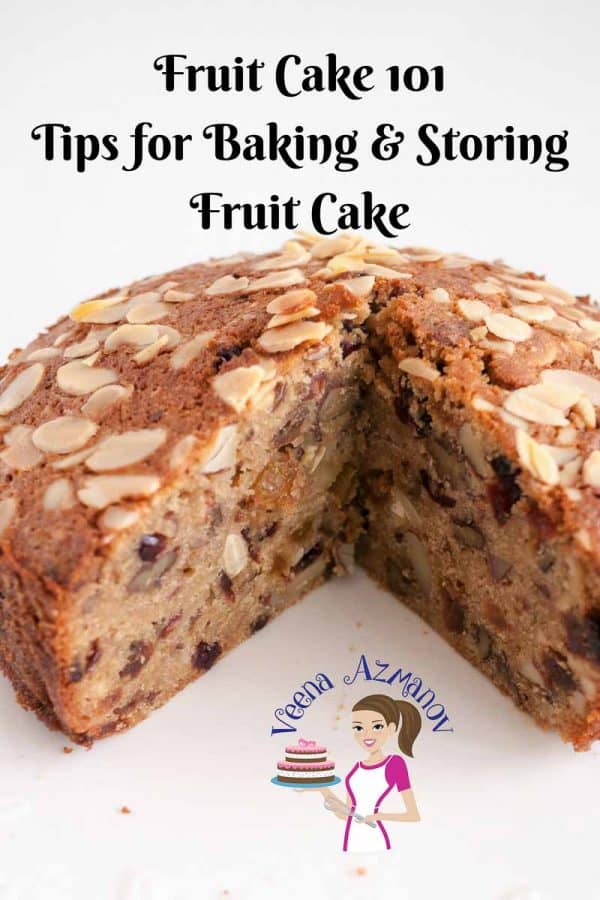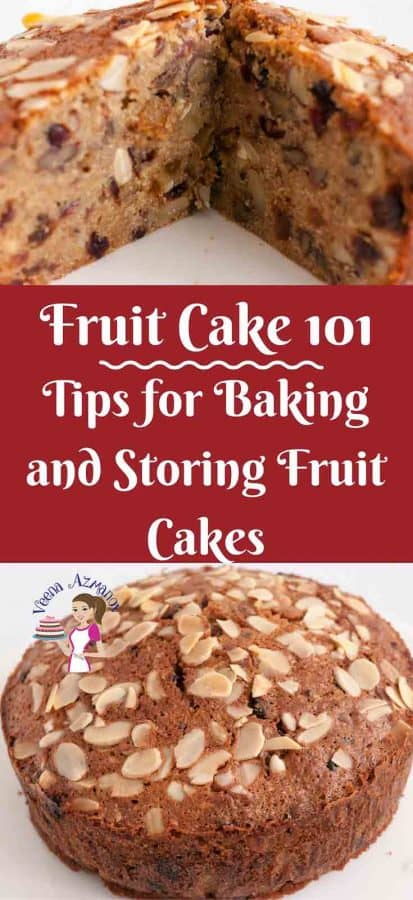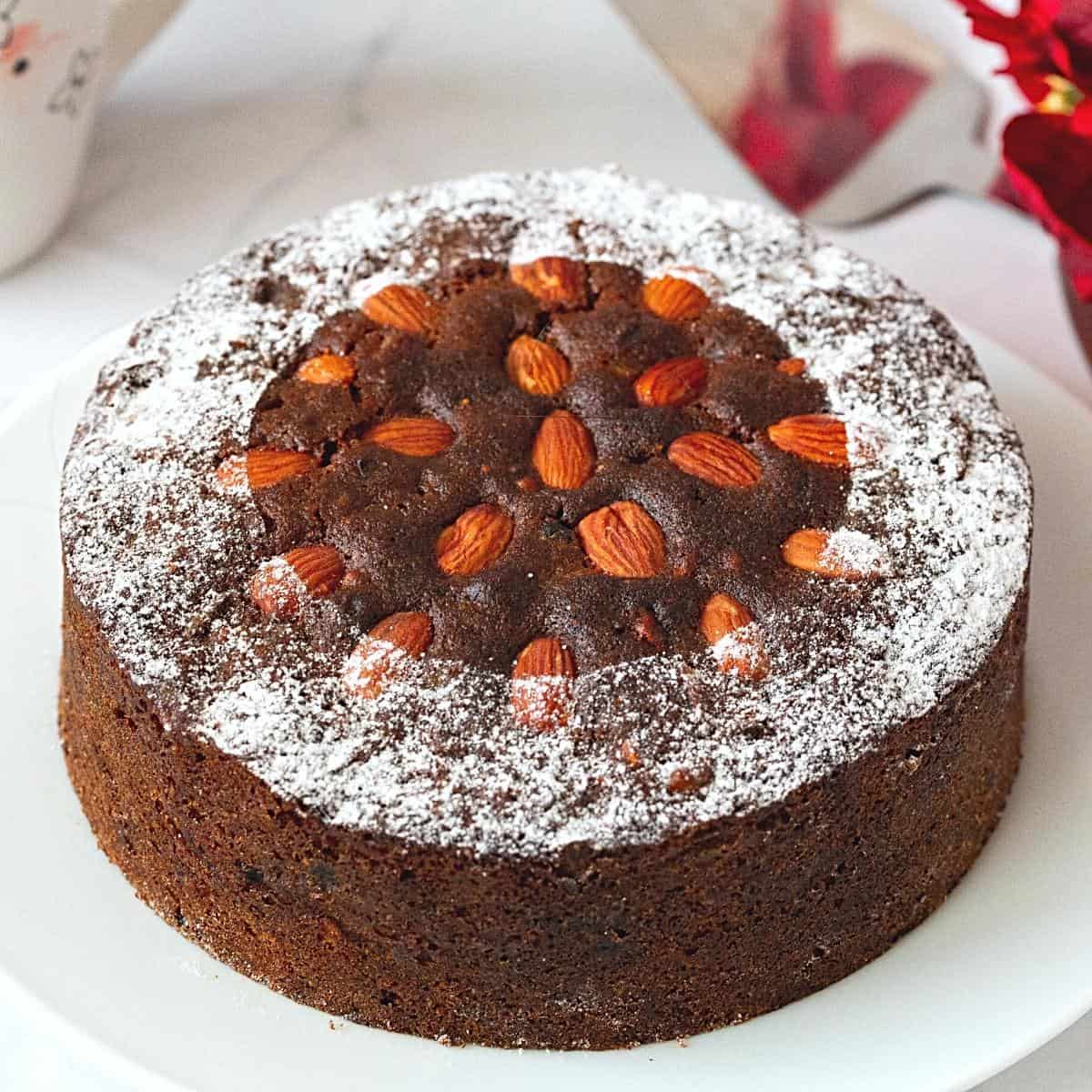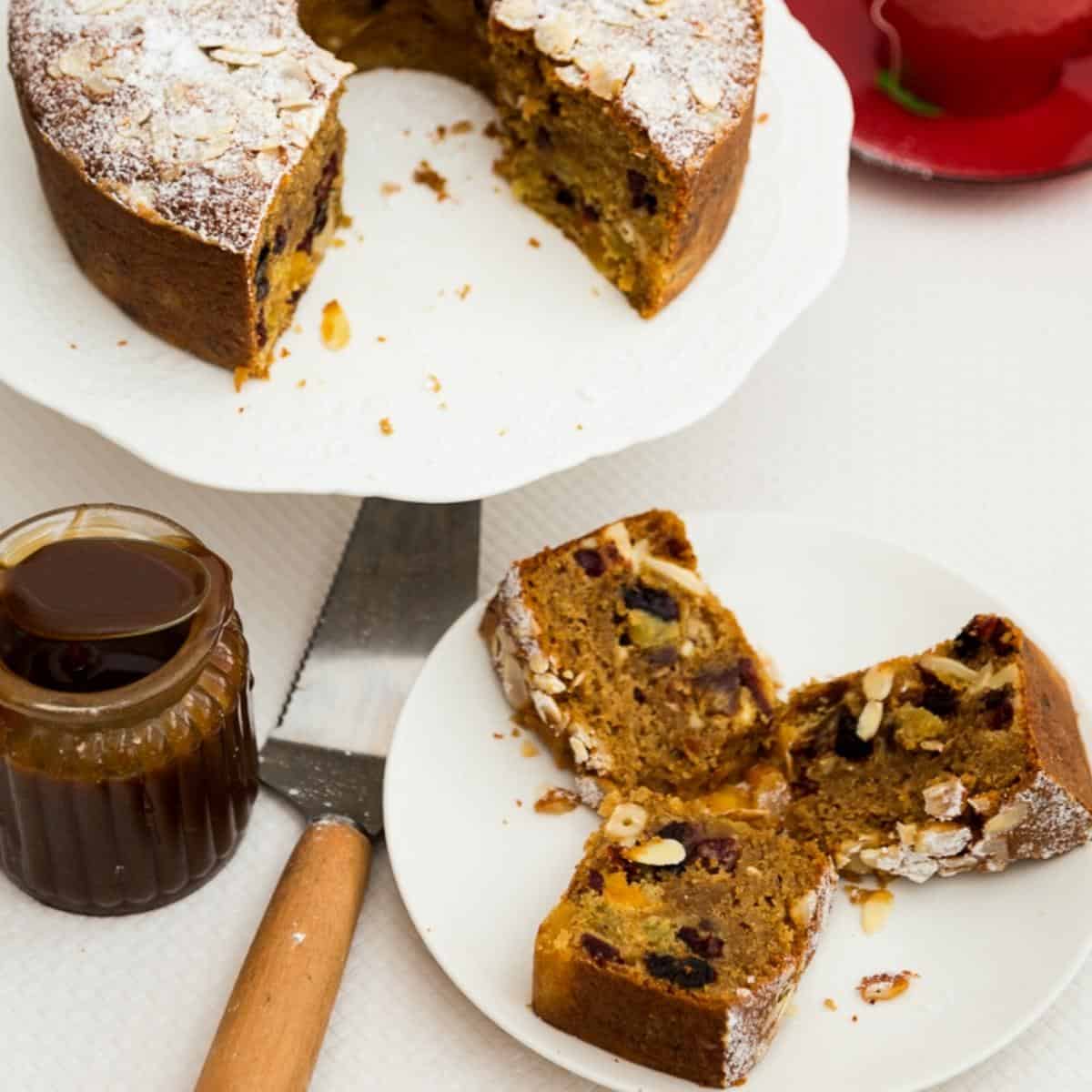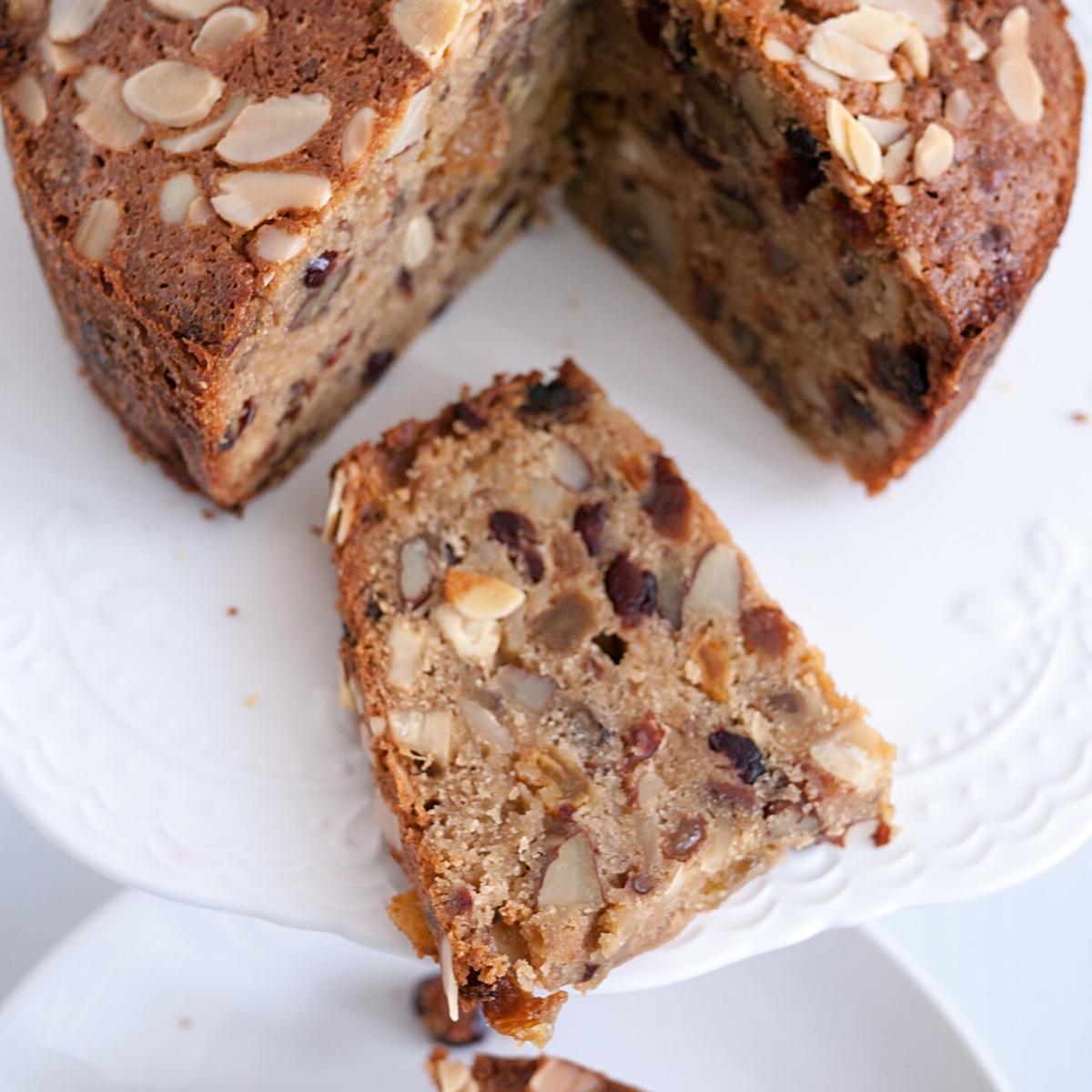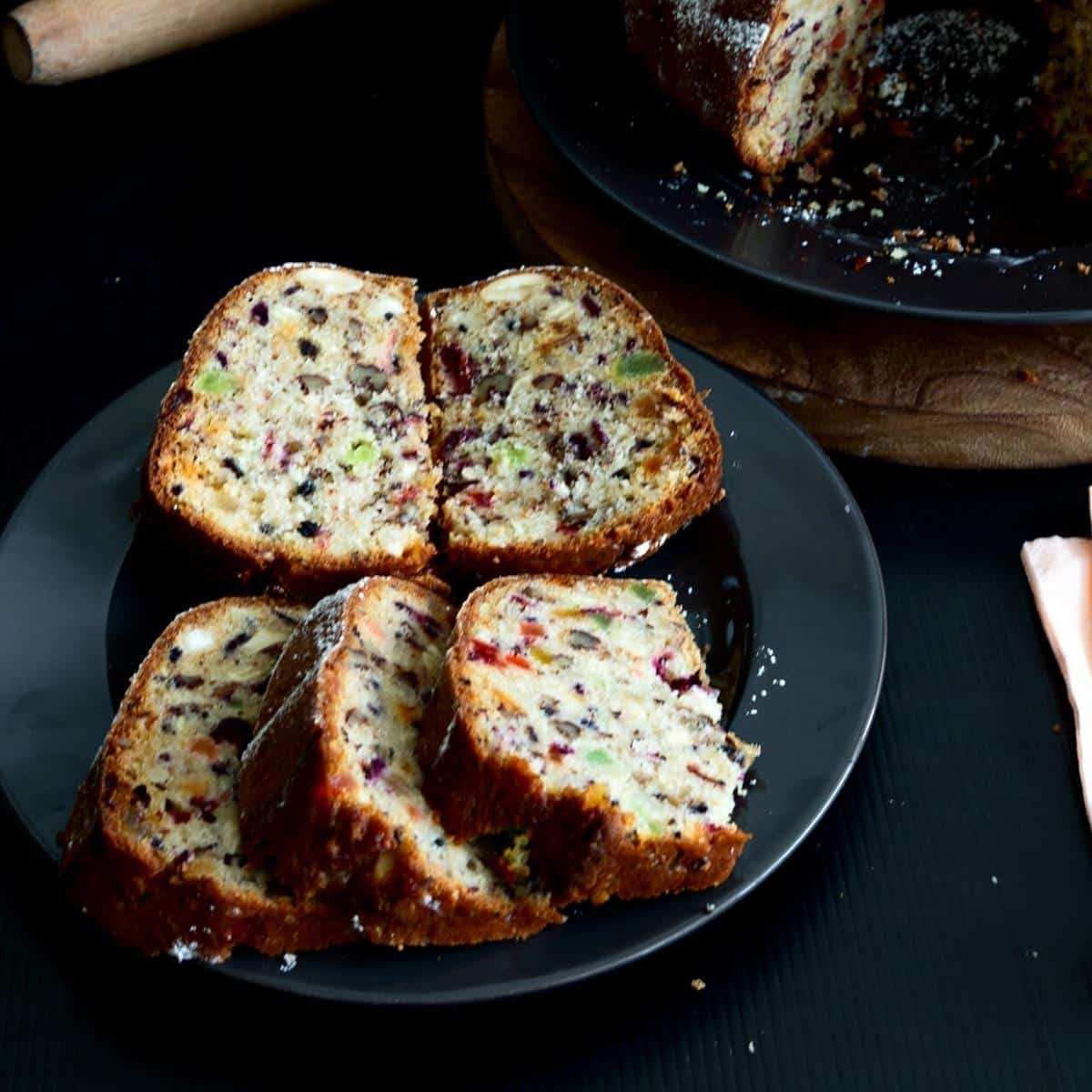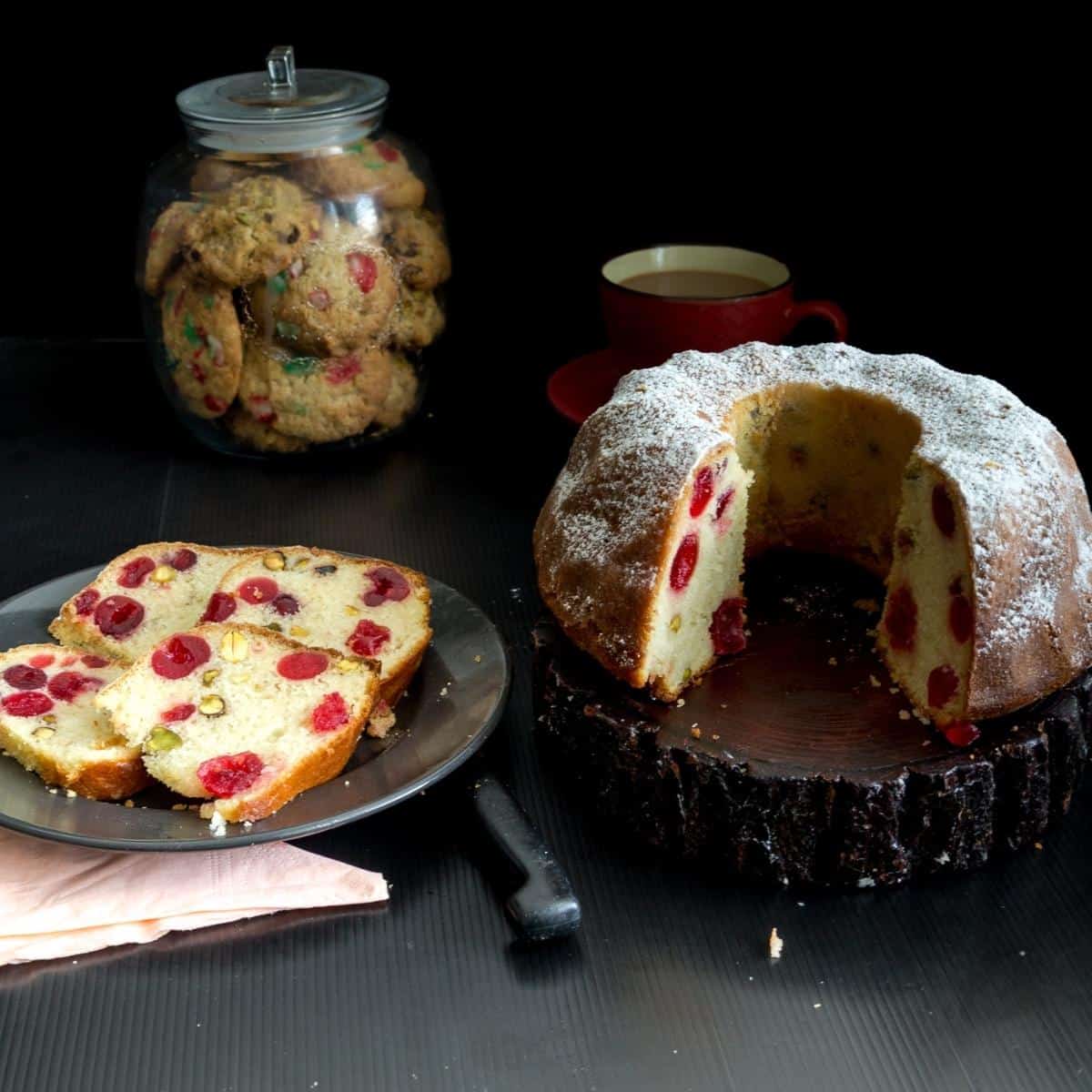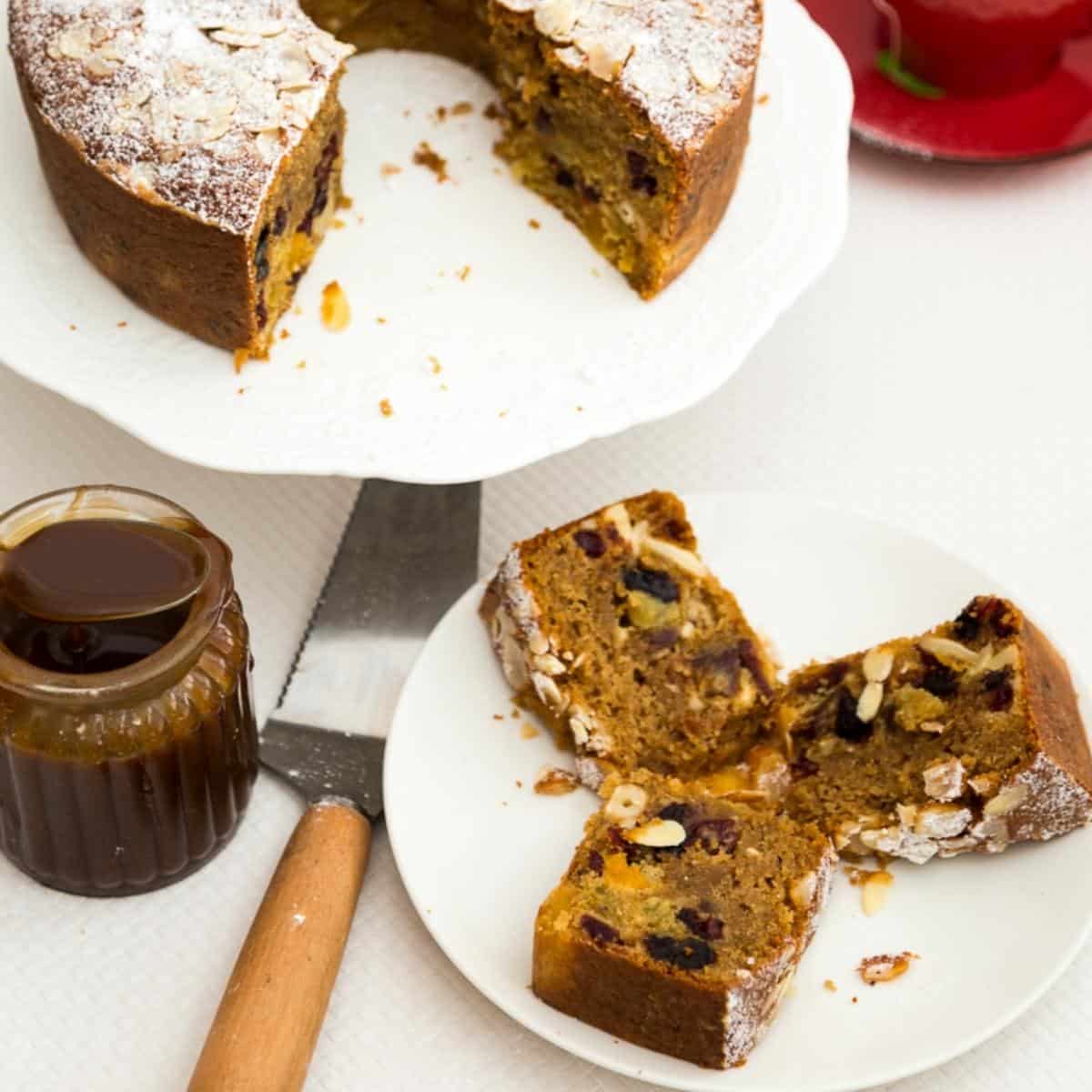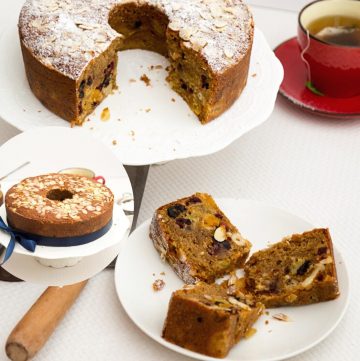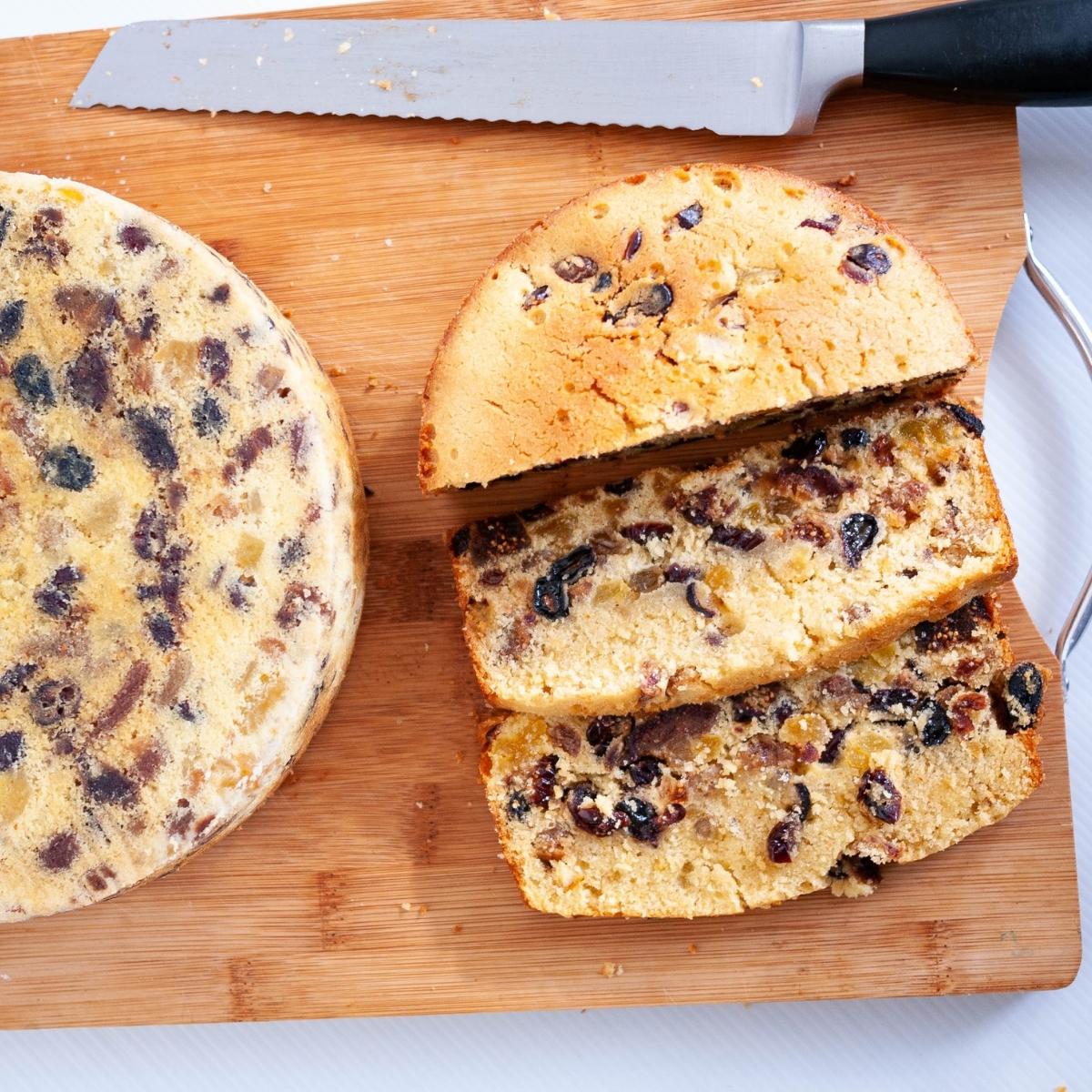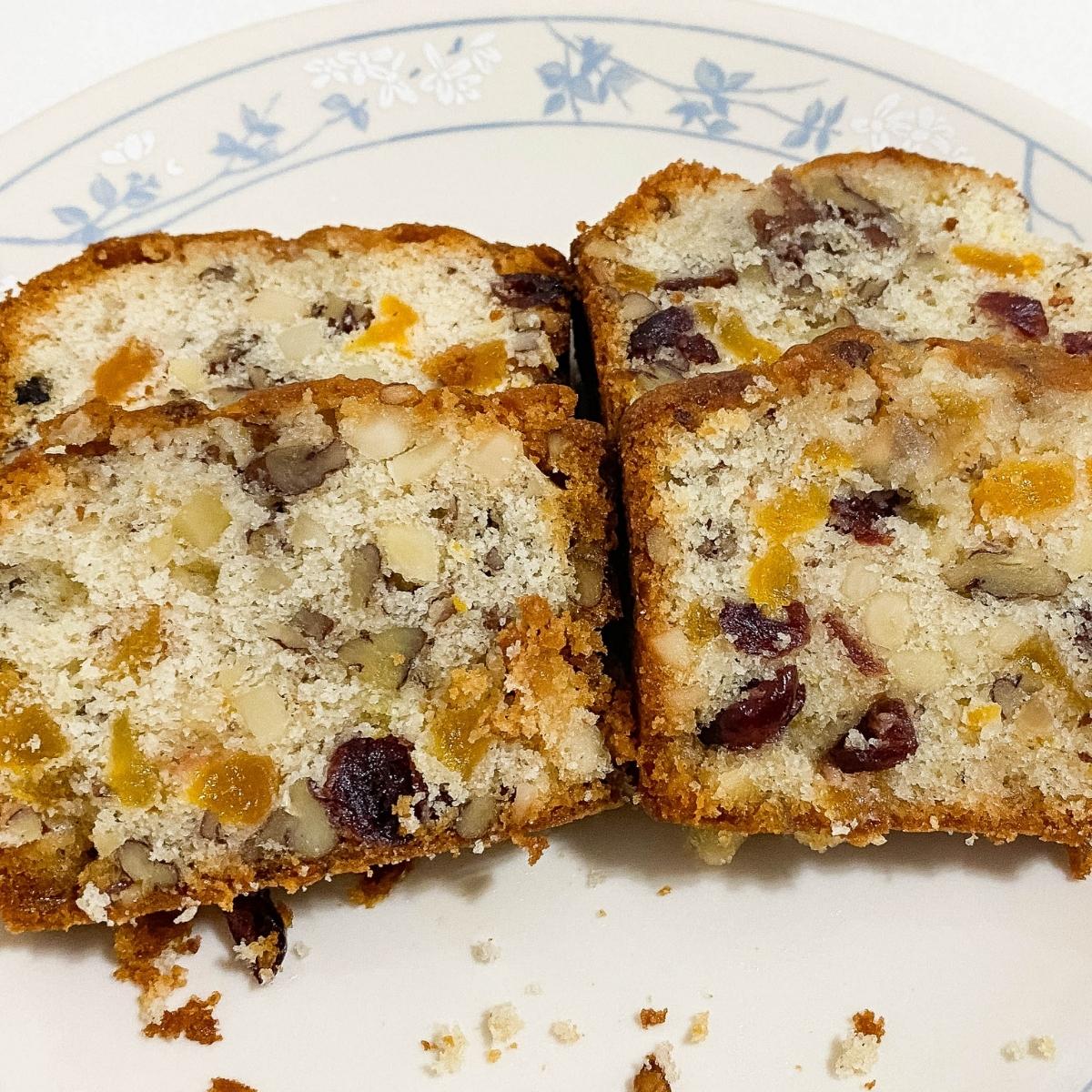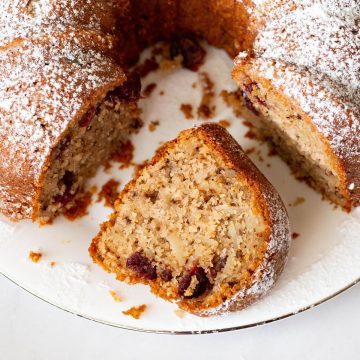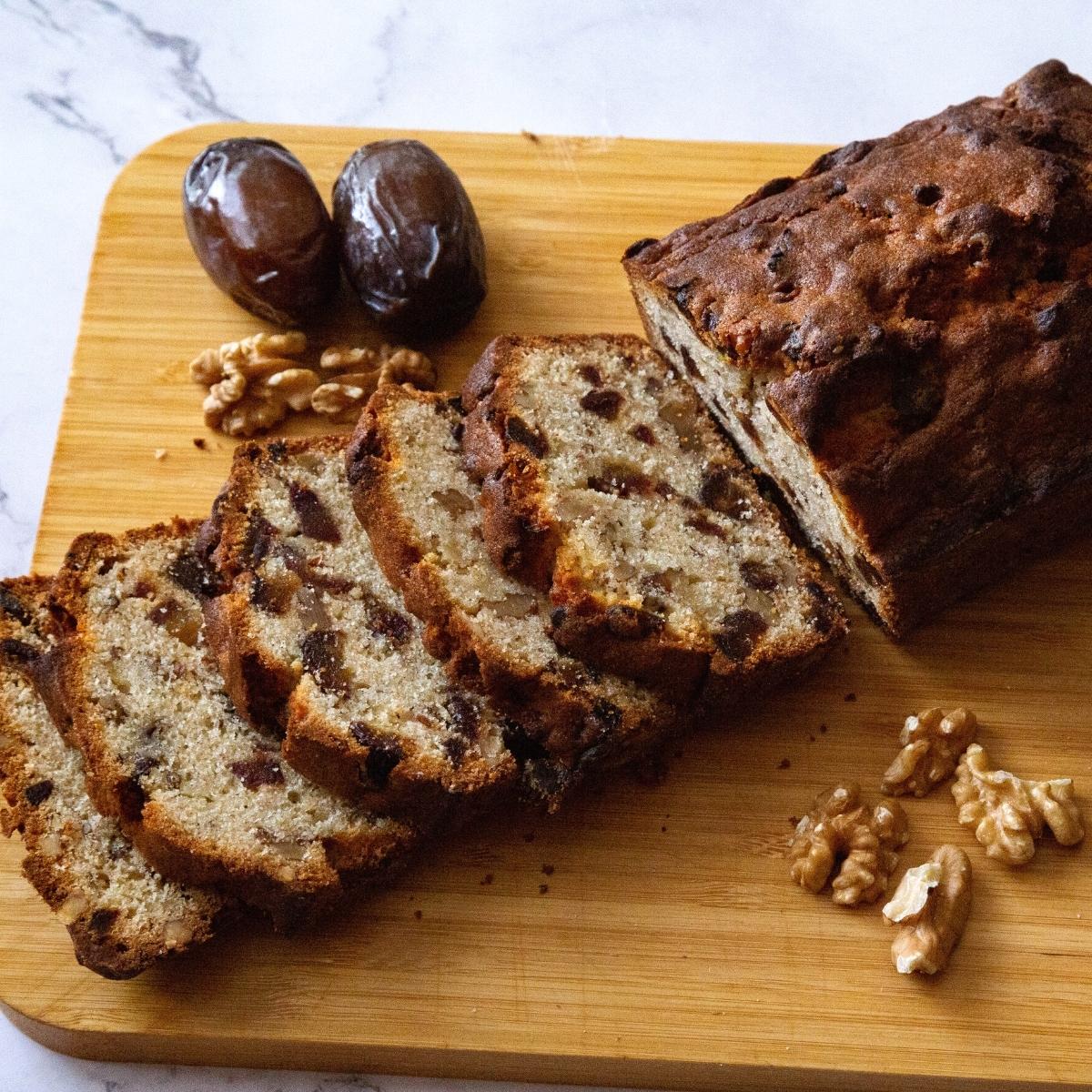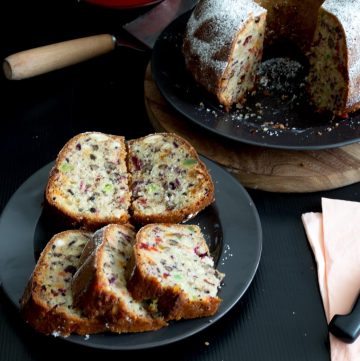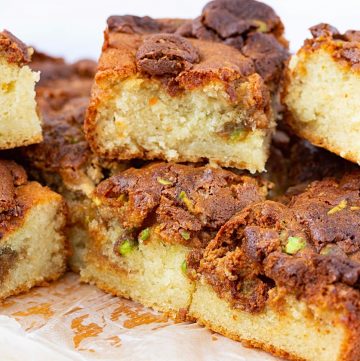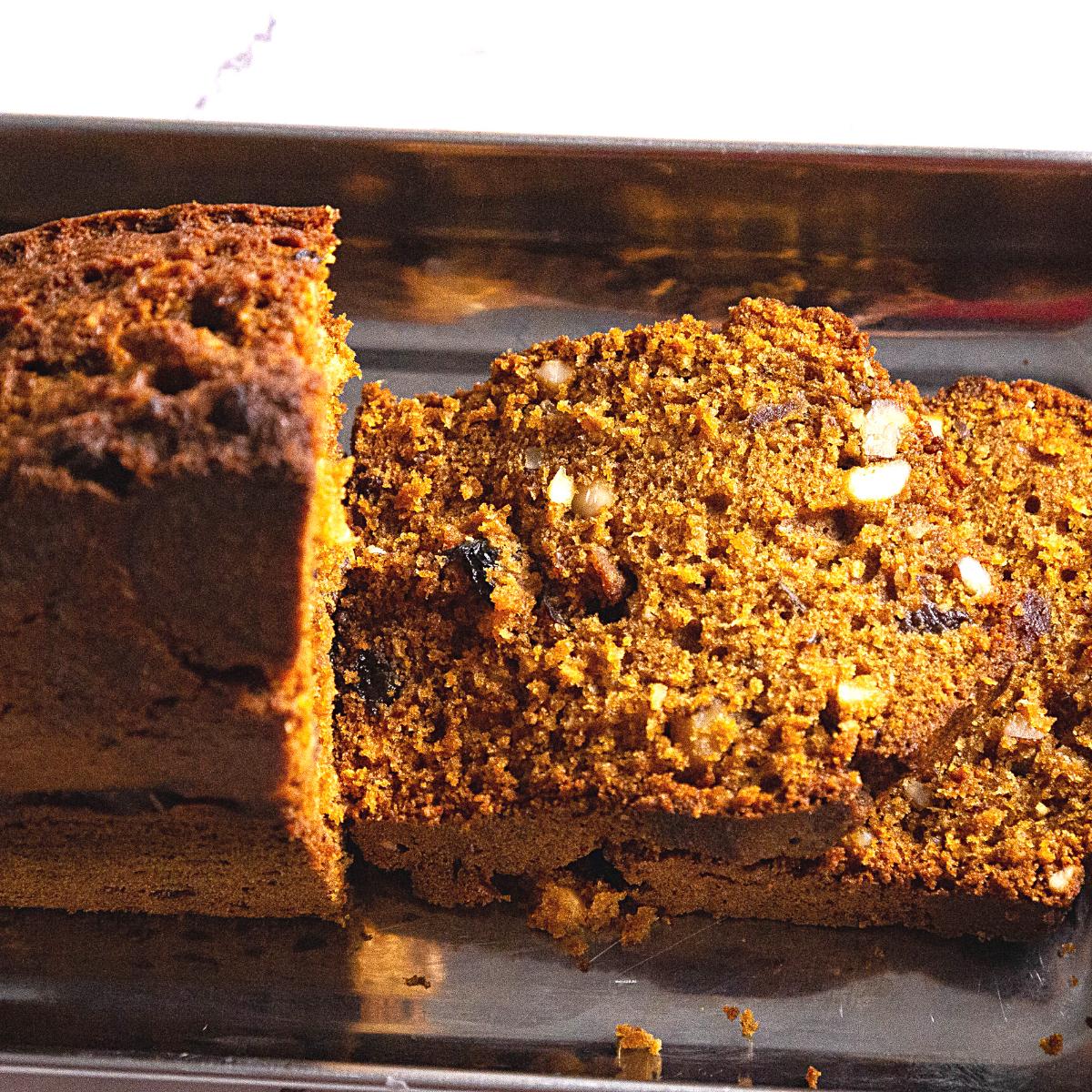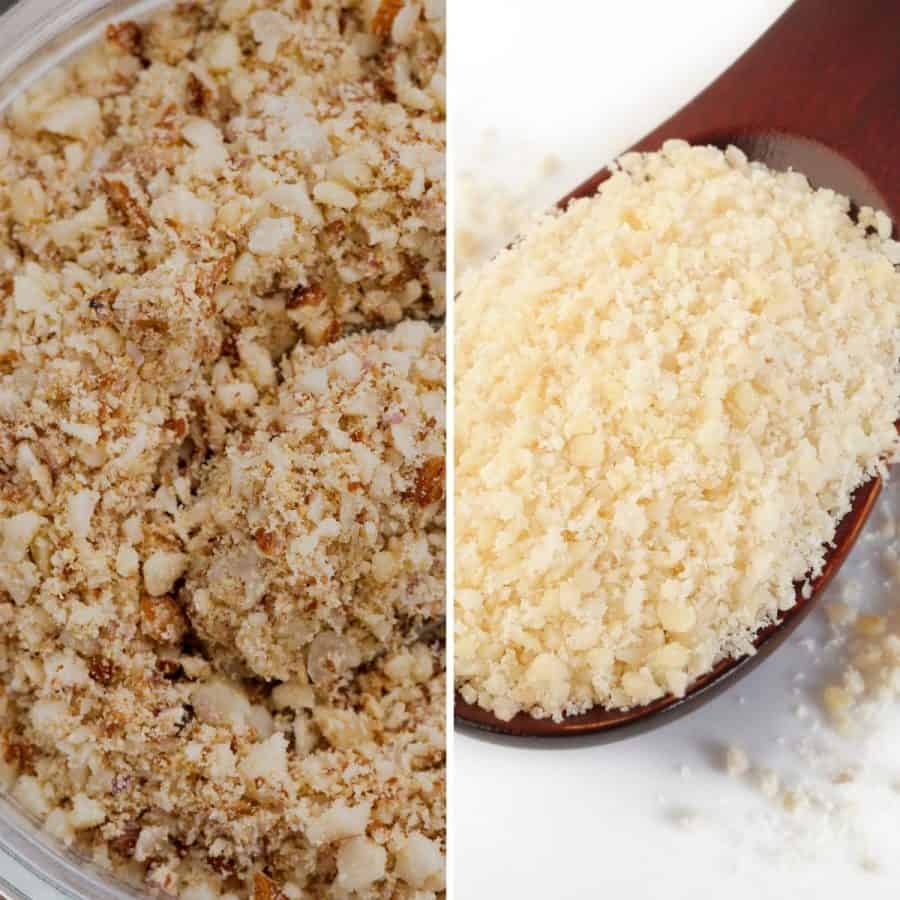Fruitcake is a dense and rich cake traditionally made with candied or dried fruits, nuts, spices, and sometimes soaked in alcohol. It is a classic dessert that is often associated with the holiday season, particularly Christmas. Here’s why fruitcake is made during the holidays and some additional information about it:
Historical Tradition: The tradition of making fruitcake dates back centuries. It was originally a luxury item due to its expensive ingredients, including aromatic dried fruits and spices. Because of its richness, fruitcake was often reserved for special occasions and holidays. Long Shelf Life: Fruitcakes have a long shelf life, thanks to their high sugar and alcohol content. The alcohol not only adds flavor but also acts as a preservative, allowing the cake to be stored and enjoyed for an extended period. Festive Ingredients: Many of the ingredients used in fruitcake, such as dried fruits like raisins, currants, and candied citrus peel, as well as nuts and spices, are associated with holiday flavors and aromas. These ingredients create a sense of warmth and nostalgia during the holiday season. Maturing and Flavor Development: Fruitcakes are often made in advance of the holiday season, allowing them to mature and develop richer flavors over time. This maturation process enhances the cake’s taste and makes it more special when served. Gift-Giving: Fruitcakes have a reputation as a thoughtful and traditional holiday gift. They are often baked, beautifully wrapped, and given to friends and family as a symbol of love and good wishes during the holiday season. Variety of Recipes: There are countless fruitcake recipes and variations to suit different tastes. Some people prefer dark and rich fruitcakes soaked in liquor, while others like lighter fruitcakes with a citrusy twist. The variety of recipes allows for personalization and experimentation. Cultural Traditions: Fruitcake is not limited to one culture but is enjoyed by people around the world. Different countries have their own unique variations and traditions for making and enjoying fruitcake during the holidays.
Overall, fruitcake is a beloved holiday tradition that brings warmth, nostalgia, and a sense of togetherness to the holiday season. It’s a symbol of celebration and sharing, making it a perfect addition to festive gatherings and a cherished gift for loved ones.
Frequently asked questions
My BEST Fruitcake Recipes
Did you enjoy this article/tutorial? Please ⭐️⭐️⭐️⭐️⭐️ itDon’t forget to Save it for latter. You can also find a collection of my tutorials and recipes on Pinterest. Follow me on Facebook, Twitter, and Instagram for more. Of course, make sure to Subscribe to my blog to receive my tutorials, and recipes by email.
Fruit and Nut Content: Christmas fruit cake is loaded with dried and candied fruits, such as raisins, currants, sultanas, candied citrus peel, and cherries, along with a generous amount of nuts like almonds, walnuts, or pecans. These fruits and nuts give the cake its signature texture and flavor. Alcohol Soaking: One of the most notable differences is that Christmas fruit cake is often soaked in alcohol (such as rum or brandy) for an extended period, sometimes weeks or months, before it’s baked. This soaking process not only adds flavor but also helps preserve the cake, allowing it to be enjoyed over time. Spices and Flavorings: Christmas fruit cakes are heavily spiced with warm and aromatic spices like cinnamon, nutmeg, allspice, and cloves. These spices contribute to the distinctive holiday flavor. Maturation: Unlike many other cakes that are best when freshly baked, Christmas fruit cakes are typically made well in advance of the holiday season. This allows them to mature and develop richer and more complex flavors over time. Maturation can last for weeks or even months. Decorations: Christmas fruit cakes are often elaborately decorated. Some are covered with marzipan and royal icing, while others are simply dusted with powdered sugar. Decorations may include festive designs, edible ornaments, and holiday-themed motifs. Tradition and Symbolism: Christmas fruit cake has a strong association with tradition and symbolism during the holiday season. It is often regarded as a symbol of love, sharing, and good wishes, and it is frequently given as a gift to friends and family. Cultural Variations: Different regions and cultures have their own variations of Christmas fruit cake. For example, in the United Kingdom, you have the Christmas pudding, which is somewhat similar but steamed rather than baked. In Italy, you have the panettone, a sweet bread filled with fruits and nuts. Serving and Enjoyment: Christmas fruit cake is typically served in small slices due to its richness. It’s often enjoyed with a cup of tea or coffee, served as a dessert after a festive meal, or given as a gift during the holiday season.
In summary, Christmas fruit cake stands out from other cakes due to its unique combination of ingredients, preparation methods, maturation, and the traditions associated with it. It’s a symbol of the holiday season and is cherished for its rich, flavorful, and time-honored qualities. By following these tips and taking your time, you’ll be well on your way to baking a perfect fruit cake that will be a hit at any celebration or as a delightful treat during the holiday season
Mixed spice is generally made with cinnamon, ground ginger, ground cloves, allspice, ground nutmeg sometimes even caraway seeds, cardamom, and cayenne. And if you cannot get mixed spice, add 1/8 tsp each of ground cinnamon, ground ginger, ground clove, and or ground allspice. Don’t like spices in your cake? Add 1/8 tsp Cinnamon, 1 tsp vanilla, or 1/2 tsp almond extract – you can add all three or just simple plain vanilla extract. And if you are going to use orange marmalade to brush the fruitcake later you could add 1/2 tsp of orange extract to enhance the flavors when baking too.
It’s important to note that the quality of a fruitcake can vary depending on the ingredients used and how it’s stored. A well-made and properly stored fruitcake can remain moist and flavorful for many months to years. However, if it’s not stored correctly or if it’s exposed to moisture or extreme temperatures, it may spoil or become stale more quickly. To ensure the longest shelf life, store your fruitcake in a cool, dry, and dark place, and maintain proper sealing to prevent air and moisture from affecting its quality. Properly cared-for fruitcakes can be enjoyed over an extended period, making them suitable for special occasions and holiday traditions.
Dry Cake: Overbaked: Check for doneness earlier and reduce baking time. Insufficient moisture: Add more liquid (fruit juice, alcohol) to the batter before baking. Cracked Top: Oven too hot: Lower the oven temperature and use a thermometer for accuracy. Overmixing: Gently fold the ingredients to avoid overmixing. Soggy Bottom: Insufficiently cooled cake: Ensure the cake is completely cool before removing it from the pan. Excess moisture from soaked fruits: Drain soaked fruits thoroughly or adjust the fruit mixture. Uneven Texture: Unevenly chopped fruits and nuts: Ensure fruits and nuts are uniformly chopped. Uneven distribution of ingredients: Mix the batter thoroughly to evenly distribute fruits and nuts. Burning Edges: Oven too hot: Reduce the oven temperature and use a well-calibrated oven thermometer. Inadequate insulation: Use a cake strip or foil to insulate the sides of the pan. Fruit Sinking to the Bottom: Toss fruits and nuts in a small amount of flour before adding them to the batter. Add fruits in layers as you fill the cake pan. Taste Imbalance: Adjust spice levels: Modify the spice blend to your preference. Balance sweetness: Adjust sugar quantities to taste. Too Dense: Overmixing: Mix gently to avoid overdeveloping gluten. Incorrect flour measurement: Measure flour accurately using the spoon-and-level method. Sticky Texture: Overly moist fruit mixture: Drain soaked fruits or reduce the liquid used. Overbaking: Bake for a shorter time to avoid drying out the cake. Crumbly Texture: Insufficient moisture: Ensure you’re using enough liquid and fats in the recipe. Overbaking: Bake for less time to retain moisture. Mold Growth: Improper storage: Keep the cake in an airtight container in a cool, dry place. Contaminated utensils: Use clean utensils and hands during preparation. Flat or Sunken Cake: Expired leavening agents: Check the freshness of baking powder or baking soda. Oven temperature fluctuations: Maintain a consistent oven temperature during baking. Bitter Taste: Burnt caramel syrup: Be cautious while making caramel; don’t overcook it. Lack of Flavor Depth: Short maturation time: Allow the cake to mature for several weeks to develop flavors. Icing Issues: Cracking: Ensure the cake is completely cool before applying icing. Uneven surface: Apply a thin layer of frosting as a base coat for a smoother finish.
All about fruitcakes – tips, storage, and more Recipe for Fruitcake Boozy Christmas fruitcake. Eggless fruitcake recipe Dark fruitcake recipe Candied Fruit Fruitcake Pistachio Cherry Fruitcake Cranberry Almond Semolina Cake
Thank you for sharing - Save for later


